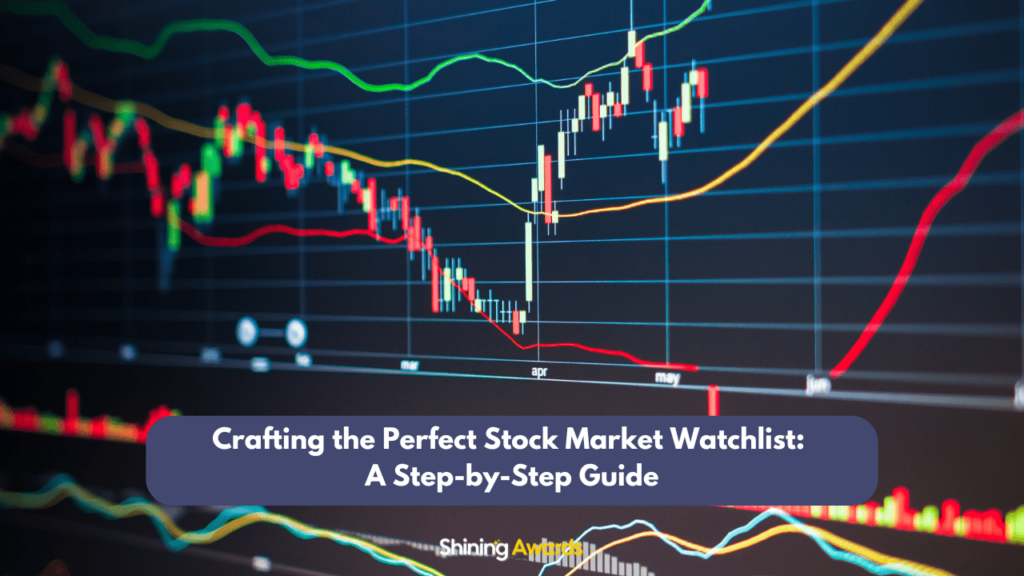Crafting the Perfect Stock Market Watchlist: A Step-by-Step Guide
Crafting the perfect stock market watchlist is crucial for investors seeking to make informed decisions and maximize returns. This step-by-step guide will provide a comprehensive overview of how to research, select, build, organize, monitor, and manage a watchlist tailored to individual investment goals and risk tolerance. Crafting the perfect stock market watchlist is an art, and the Everix Edge official website connects traders and investment education experts to guide you through each step.

Researching and Selecting Potential Stocks
Researching and selecting potential stocks for your watchlist is a critical aspect of successful investing. It involves a systematic approach to analyzing stocks based on various criteria to make informed decisions. Start by understanding the purpose of your investment, whether it’s for long-term growth, income generation, or a combination of both. This will help you narrow down the types of stocks that align with your goals and risk tolerance.
When researching stocks, look beyond just the current market trends. Dive deep into the company’s financial health, including its revenue growth, profitability, debt levels, and cash flow. Evaluate the company’s competitive position within its industry and its ability to withstand market fluctuations. Consider factors such as the company’s management team, brand reputation, and innovation capabilities, which can indicate its long-term viability.
It’s also crucial to assess the broader economic and industry trends that may impact the stock’s performance. Look for companies that are well-positioned to benefit from these trends or have a competitive edge over their peers. Additionally, consider the valuation of the stock relative to its peers and historical performance. A stock that is trading at a discount to its intrinsic value may present a buying opportunity.
When selecting stocks for your watchlist, aim for diversification across different industries and sectors to reduce risk. Avoid being swayed by short-term market fluctuations or hype surrounding certain stocks. Instead, focus on building a portfolio of high-quality stocks with strong fundamentals and growth potential. Regularly review and update your watchlist based on new information and changes in your investment goals to ensure it remains relevant and effective in achieving your financial objectives.
Building and Organizing Your Watchlist
Building and organizing your watchlist is a fundamental step in effective investment management. Begin by identifying the criteria you will use to select stocks for your watchlist. This may include factors such as industry, market capitalization, dividend yield, or growth potential. Once you have defined your criteria, research and identify stocks that meet these criteria and align with your investment goals.
Next, create a systematic process for adding stocks to your watchlist. This could involve using a spreadsheet or an online tool to track the stocks you are interested in. Organize your watchlist in a way that makes it easy to track and monitor the performance of your selected stocks. Consider categorizing your watchlist based on different criteria, such as industry or market cap, to help you make informed decisions.
Regularly review and update your watchlist to ensure it remains relevant to your investment strategy. This may involve adding new stocks that meet your criteria or removing stocks that are no longer aligned with your goals. Pay attention to changes in the market and industry trends that may impact the stocks on your watchlist, and adjust your watchlist accordingly.
Organizing your watchlist can also help you prioritize your investment decisions. By categorizing your watchlist based on different criteria, you can quickly identify opportunities and risks within your portfolio. Additionally, organizing your watchlist can help you stay disciplined and avoid making impulsive investment decisions based on short-term market fluctuations.
Monitoring and Managing Your Watchlist
Monitoring and managing your watchlist is essential for successful investing. It involves regularly reviewing the stocks on your watchlist to track their performance and make informed decisions. Start by setting aside time each week to review your watchlist and update it based on new information or changes in your investment goals.
When monitoring your watchlist, pay attention to key metrics such as stock price performance, earnings reports, and news updates. These factors can provide valuable insights into the health and prospects of the companies in which you are invested. By staying informed about market trends and developments, you can identify potential buying or selling opportunities and take action accordingly.
Managing your watchlist also involves periodically reviewing your investment strategy and adjusting it as needed. This may involve rebalancing your portfolio to maintain your desired asset allocation or reallocating funds based on changing market conditions. By actively managing your watchlist, you can stay on top of your investments and make informed decisions that align with your financial goals.
It’s important to stay disciplined and avoid making emotional decisions based on short-term market fluctuations. Instead, focus on the long-term fundamentals of the companies in your watchlist and how they align with your investment goals. By regularly monitoring and managing your watchlist, you can maximize the potential returns of your investments and achieve your financial objectives.
Conclusion
In conclusion, a well-crafted stock market watchlist is a powerful tool that can help investors navigate the complexities of the stock market and achieve their financial goals. By following the steps outlined in this guide, investors can build a watchlist that reflects their investment objectives and helps them stay informed and proactive in managing their portfolios.